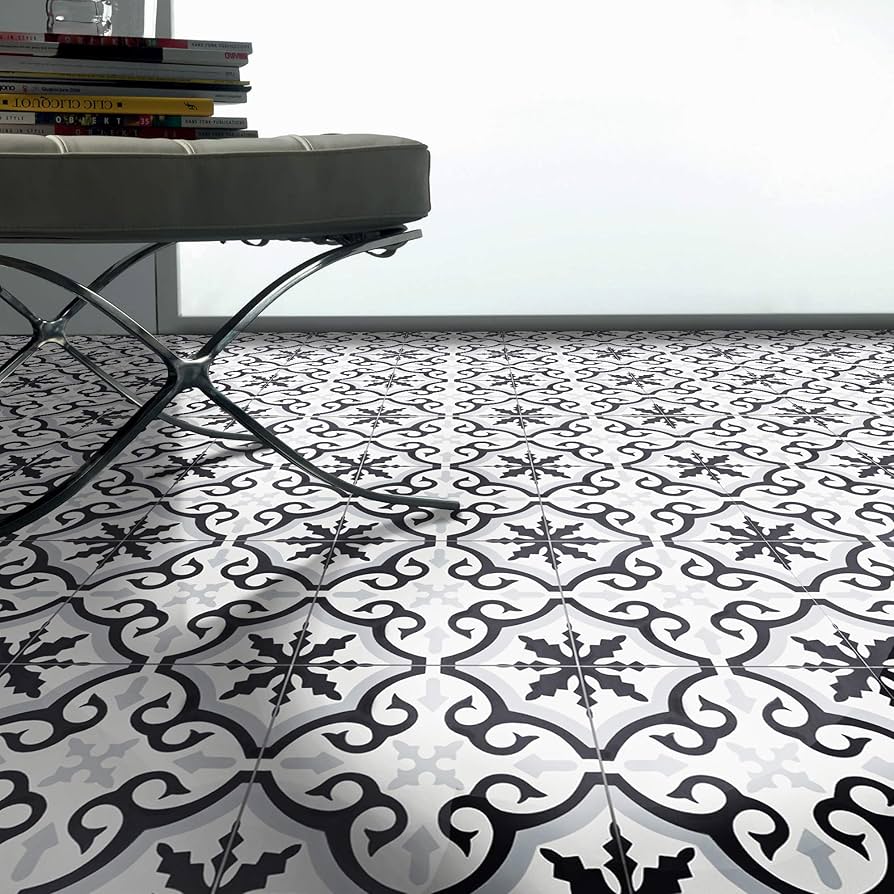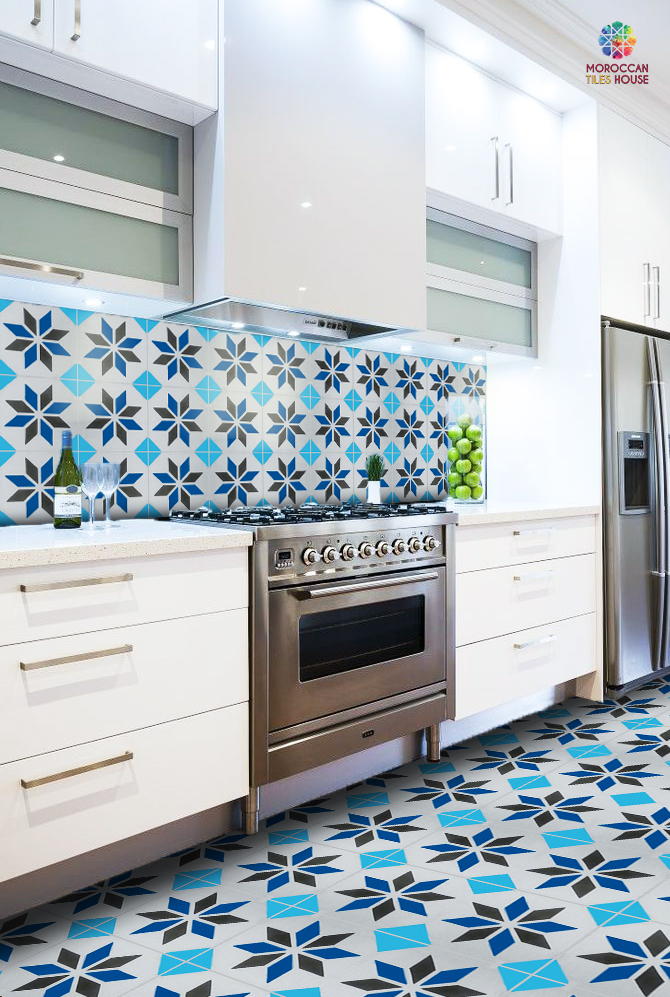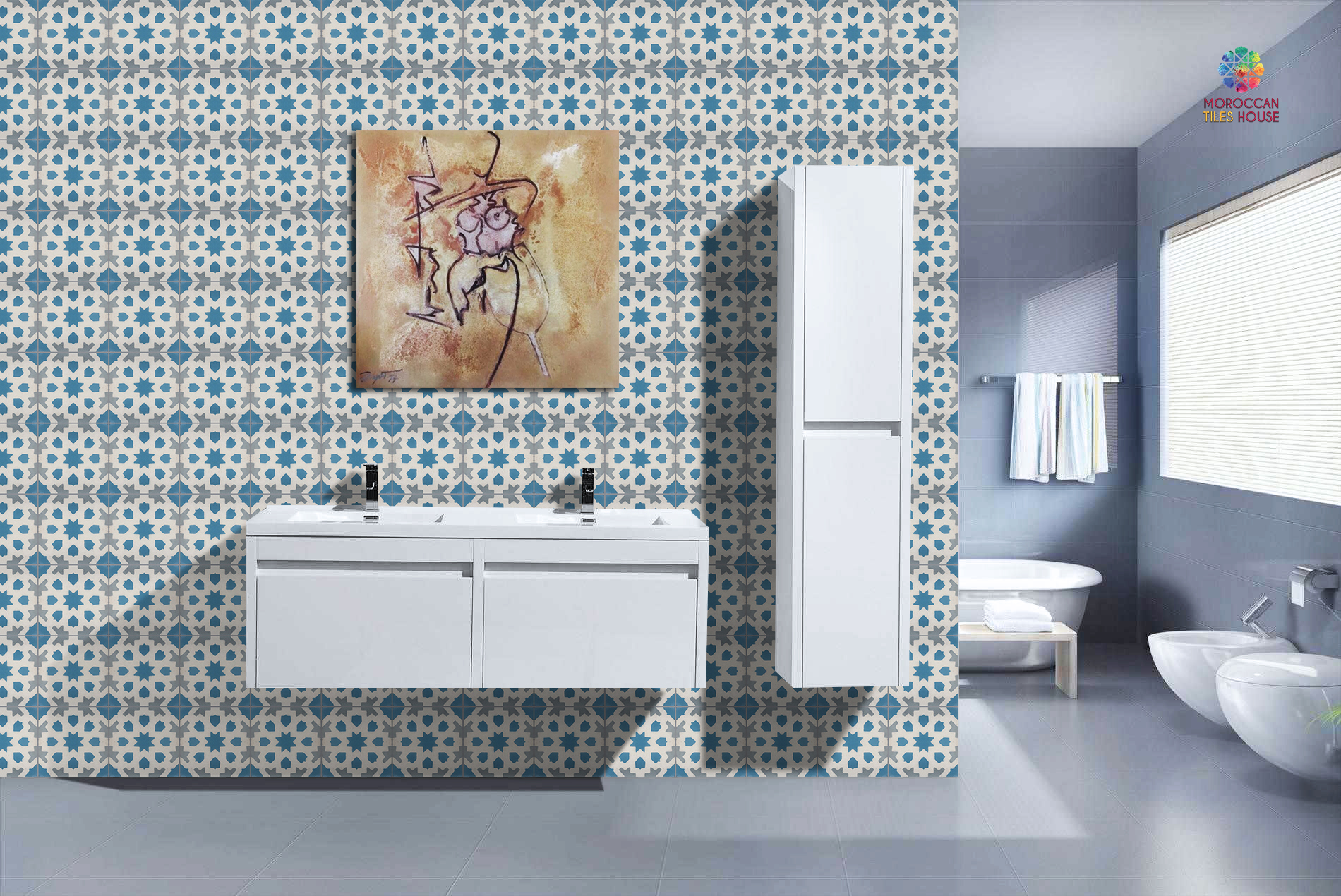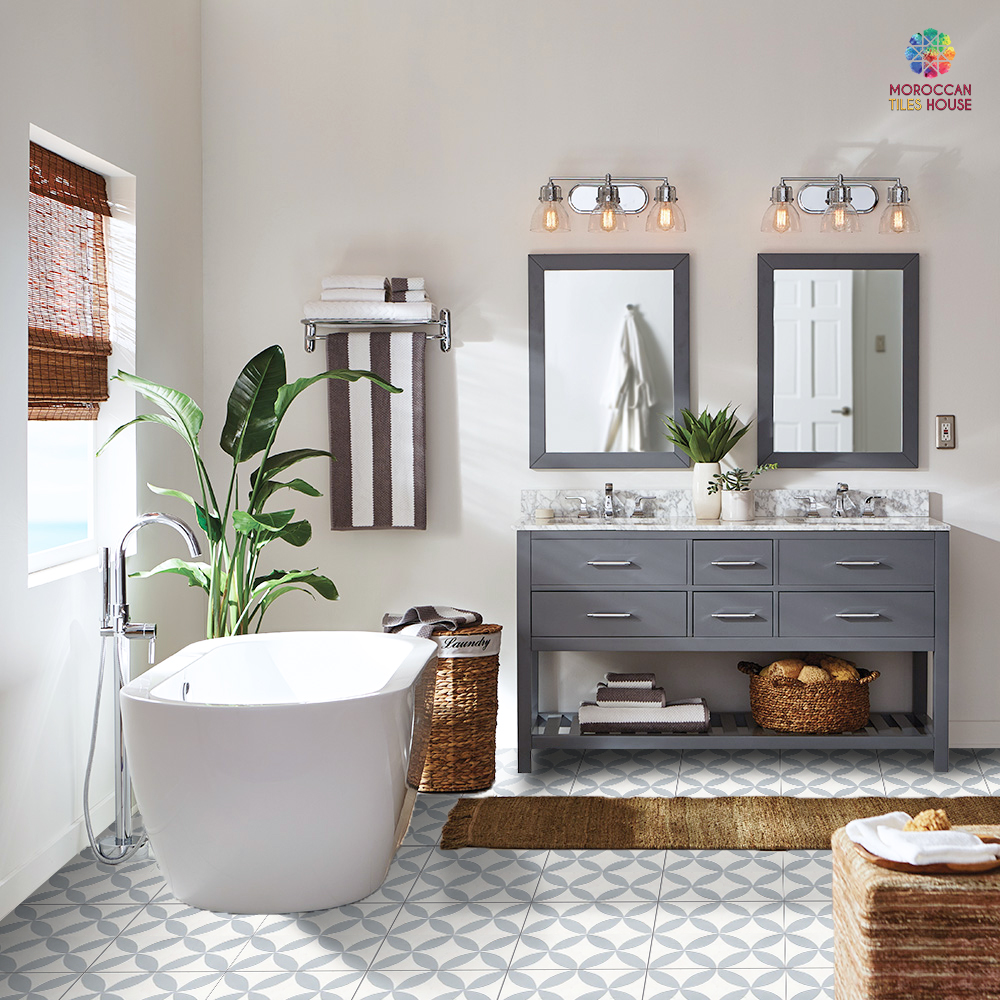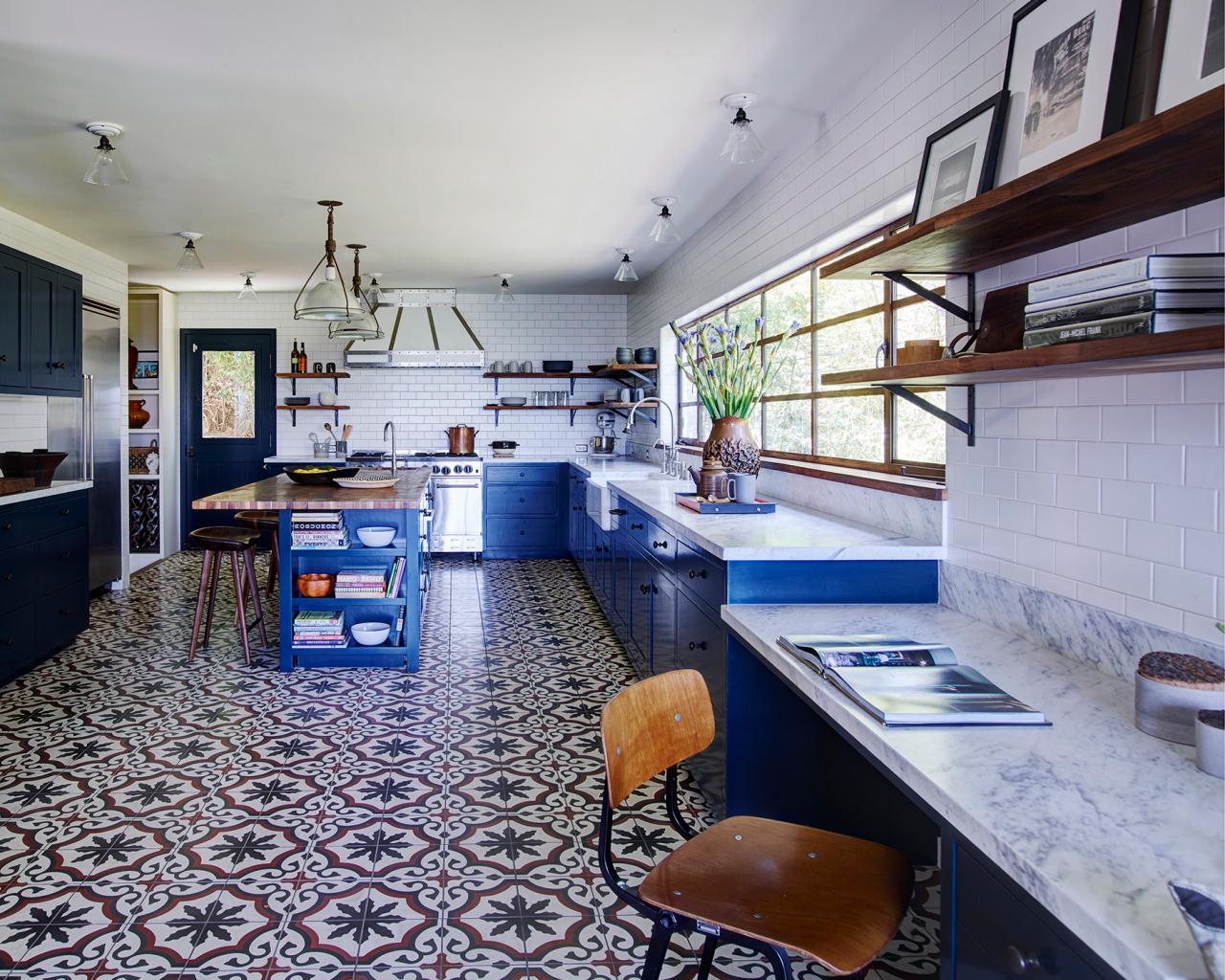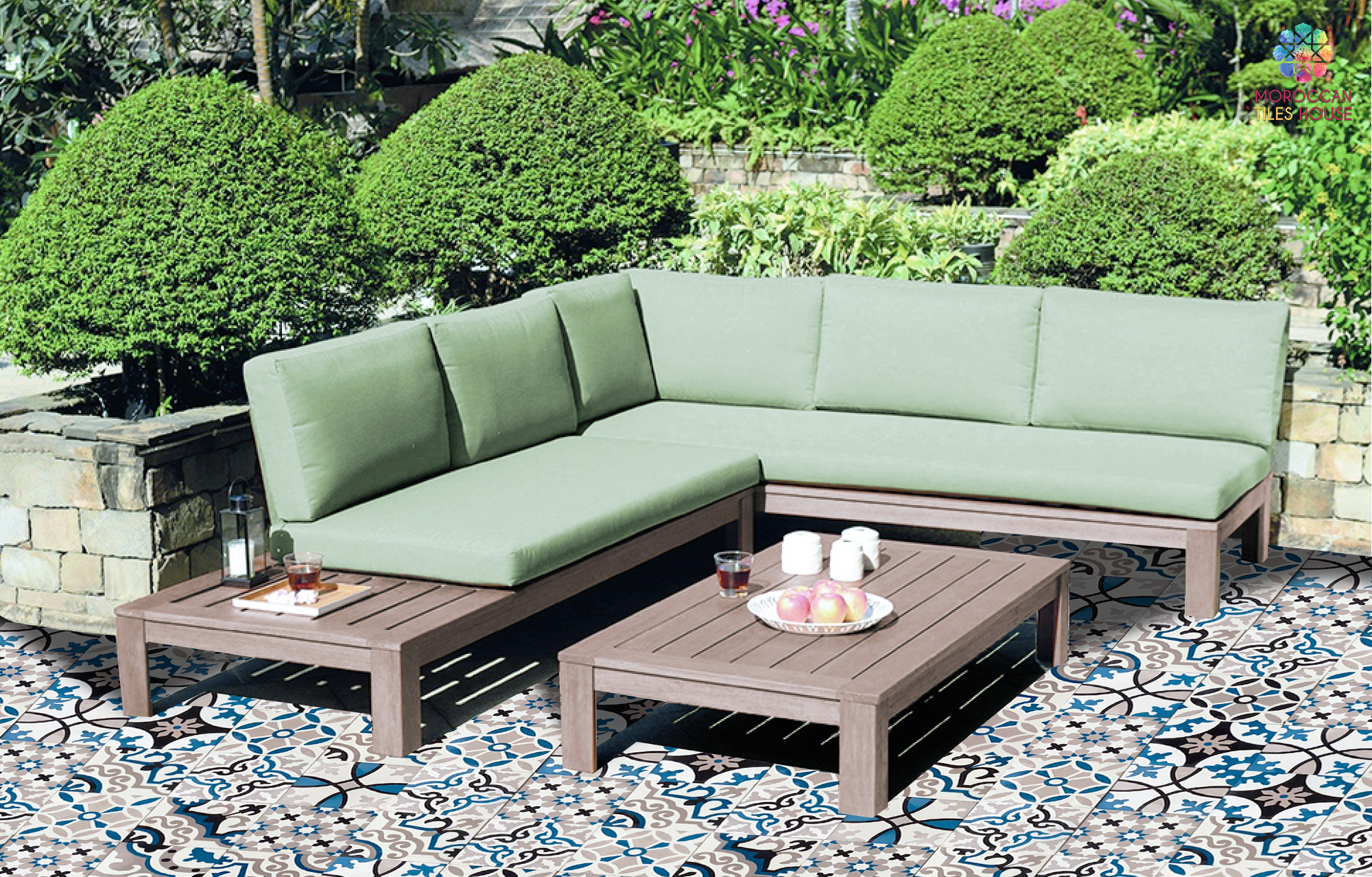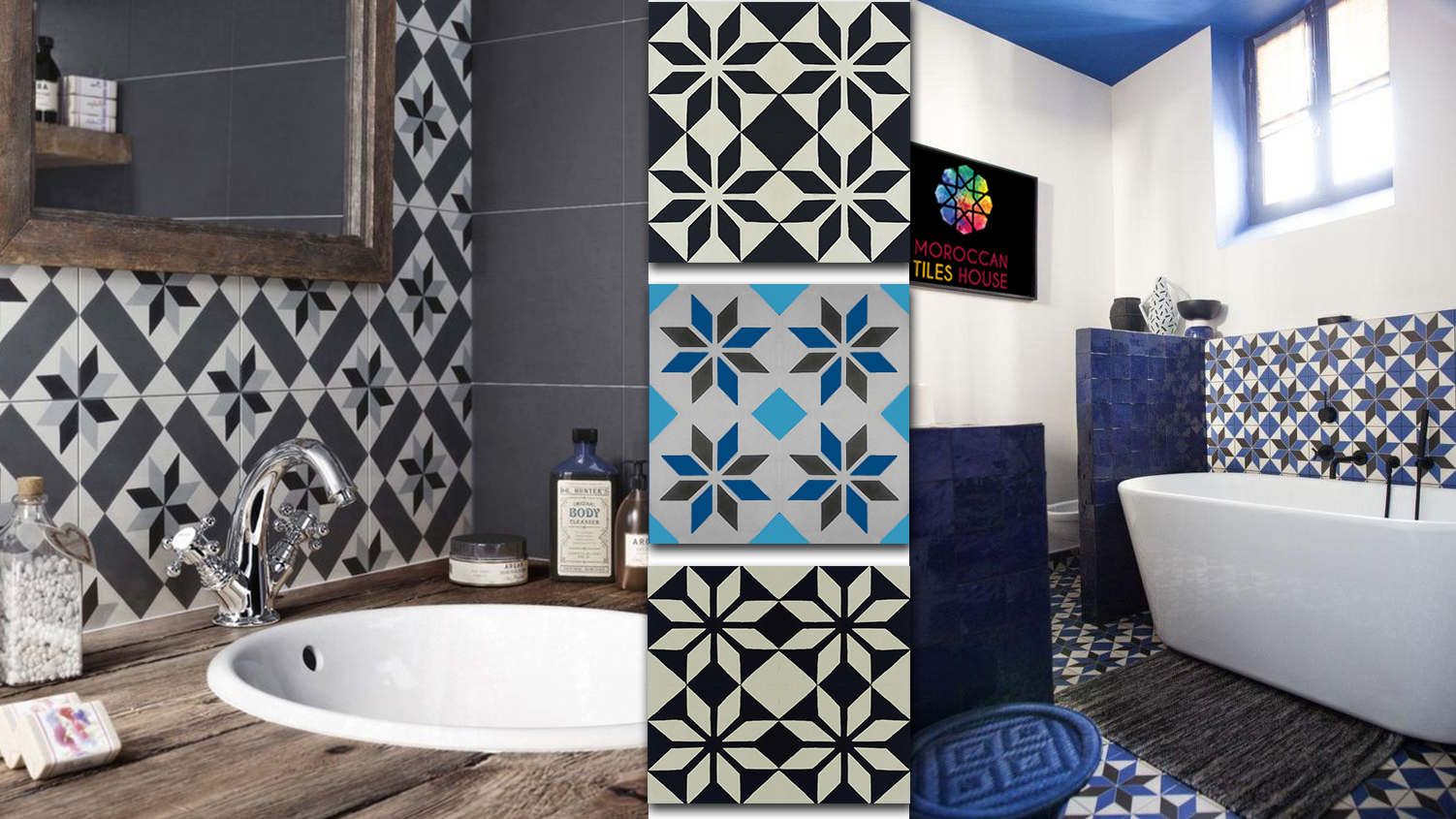
Blog
Moroccan Cement Tiles : Cleaning Ideas !
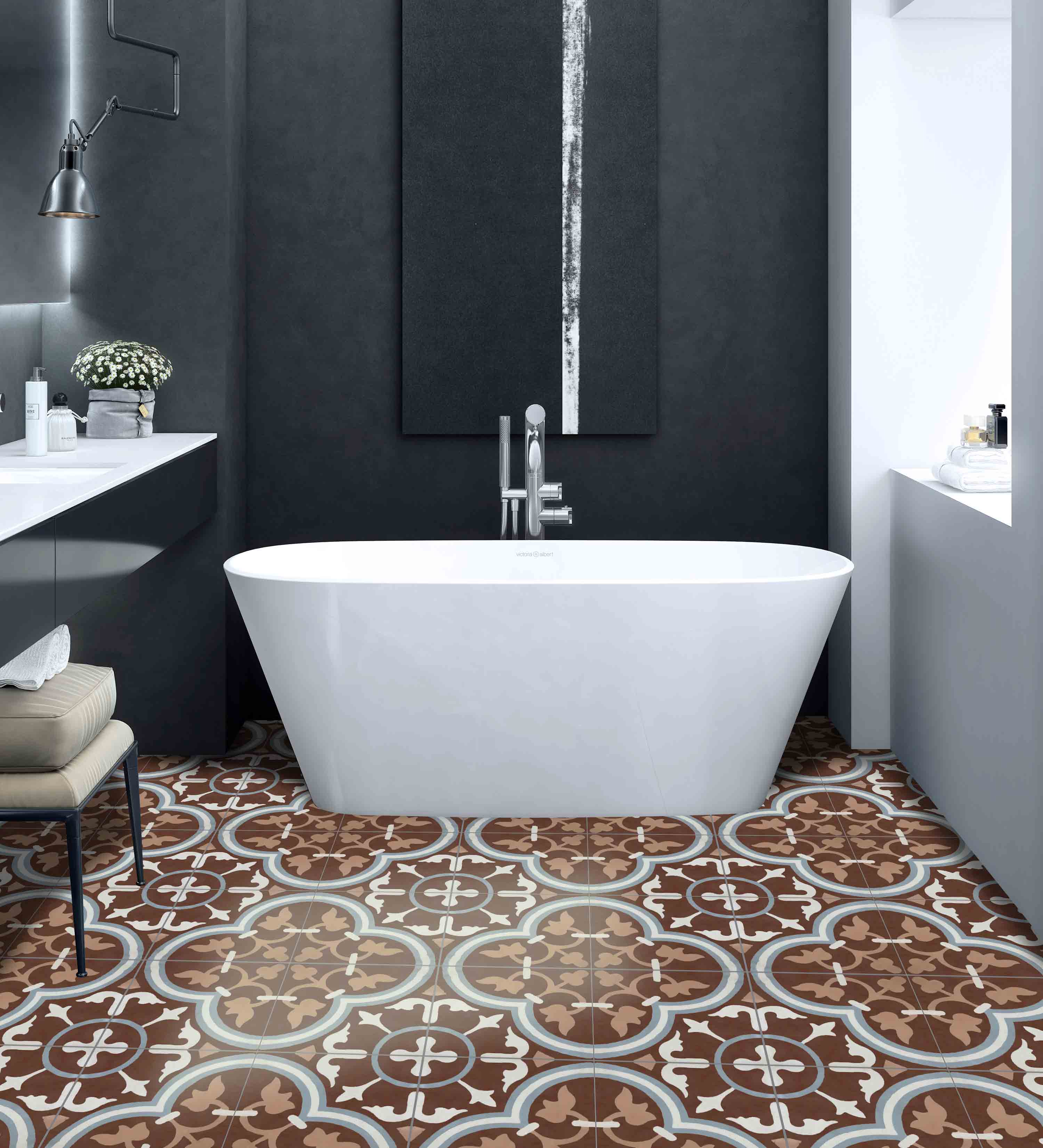
Moroccan Cement Tiles are the new-old way to decorate your house. With the ability to use theme in walls and floors, Moroccan Cement Tiles got the popularity that they deserve.
Marble powder and high quality of colour pigments are the descriptions of Moroccan Cement Tiles with Moroccan Tiles House, a tile that can get through the hardest surroundings, from stains to drops, with the highest resistance of any Cement Tile around the world.
While Moroccan Cement Tiles have been proven to last many, many years, they still require the regular cleaning and occasional tile-specific maintenance to remain strong and beautiful.
We provide you with different structures that can guide you for cleaning and maintaining Moroccan Cement Tiles :
Maintenance Tips :
Moroccan Cement Tiles aren’t hard to maintain but they do require some basic cleaning and maintenance to keep their beauty and handmade charm. The first item of action is to mop your cement tiles on a regular basis using clean water and a neutral cleaning solution.
To keep moroccan cement tiles looking their best, make sure not to let any type of liquid sit on the tile surface. Clean up any spills immediately and dry the cement tiles completely with a clean cloth to prevent stains and permanent damage. Given that cement-like marble and other natural stone – is a porous material that absorbs liquids easily, over time, liquids like wine, soda, vinegar, and even water that is left to accumulate, can stain the tile.
For cement tiles in high traffic areas, or outdoors, you may need to refinish them more regularly to maintain their glimmering. Similar to natural stone, moroccan cement tiles can be refinished with a fine grit (e.g. 600) wet-dry sandpaper to remove a micro top layer to reveal a fresh layer of pigment below the surface.
Cleaning Dos and Don’ts :
Moroccan Cement Tiles are built to last and will retain their glimmering if cared for appropriately. Follow these guidelines when cleaning up spills on your cement tiles:
- Sweep cement tiles daily to brush away dirt and debris
- Wash cement tiles weekly to monthly with water and mild pH-neutral soap to buff away any dried residue before it sets in and becomes a stain
- Never use an acid-based cleaning solution or bleach on cement tiles because they can wear away at the sealer and damage the surface of the tile
- Avoid using detergent because it can leave a residue on the tile that is difficult to clean and can attract dirt and debris
Removing Stains :
Even sealed cement tiles can stain if spills are not cleaned up right away and properly. Common stains are wine, coffee, salad dressings, sauces, food spills, and even water when left to sit on the tile surface and accumulate.
Stains are typically divided into the following categories:
- Organic substances: food, beverages, cosmetics, plants, and blood
- Naturally occurring substances: mildew, mold, fungus, and algae
- Grout and mortar residue
- Inorganic stains: rust and stains from different types of metals
- Oil-based: common cooking oils, grease, and body oil
- Paints and inks
Listed below are the most recommended methods for removing the different types of stains on cement tiles. Many messes can be cleaned with an all-purpose cleaner. Deep set-in stains may not come out with a general cleaner. If an all-purpose cleaner is not working for you, try the suggestions listed below. Avoid using acids like bleach, vinegar, and citrus soaps to remove stains since they can wear away at the sealer and damage the tile surface.
Organic Stains (food, beverages, and bodily fluids) :
- Poultice with hydrogen peroxide (To make this thick, stain-removing paste, mix unscented baby powder or talcum powder and 40% hydrogen peroxide. Soak an absorbent material like paper or cotton in your special poultice and let it sit on the stained spot to absorb the stain and pull it out.)
- Fine (600 grit) wet-dry sandpaper used with plenty of water, and clean cloths to mop up the water as you go
Naturally Occurring Stains (mildew, mold, and fungus) - Liquid poultice solution (same as above)
- Scrub brush or fine wet-dry sandpaper (same as above)
Grout and Mortar Residue - Clean water and a soft bristle brush
- Fine wet-dry sandpaper (same as above)
Inorganic Stains (rust and stains from different types of metals) - Liquid poultice solution (same as above)
- As a last resort (and an exception to the acid rule): Oxalic acid, which is an acidic substance that specifically binds to metal ions and can remove tough rust stains. Use oxalic acid by itself in powder form or mixed with water. Wet the stained area and apply the acid using circular motions over the stain. Rinse and remove any acid or leftover residue. A sealer may need to be re-applied over the tiles cleaned with oxalic acid.
Ink Stains - Liquid poultice for concrete
- Hydrogen peroxide 35% for light colors
- Acetone or lacquer thinner for dark colors
Oil Stains - Household cleaner
- Mineral spirits
There are different Products that you can use to clean your Moroccan Cement Tile, we recommand this kind of Mop, they are available in Amazon : https://www.amazon.com/Microfiber-Mop-Hardwood-Floor-Cleaning/dp/B01CFIHGLA/ref=sr_1_1?crid=2EMLBC0NZR7DW&keywords=cement+tile+cleaner&qid=1574421672&smid=ADHTK9LY1ZQBP&sprefix=Cement+Tile%2Caps%2C237&sr=8-1

